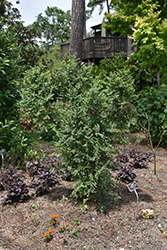It's all about ...
plants

Height: 10 feet
Spread: 8 feet
Sunlight:
![]()
Hardiness Zone: 5a
Other Names: Dwarf Elm, Lacebark Elm
Description:
A magnificent dwarf cultivar, primarily used for rock gardens and bonsai; features small, dark green leaves and interesting corky bark, impressive in winter; highly resistant to Dutch elm disease, adaptable, and great for smaller spaces
Ornamental Features
Seiju Elm has attractive dark green deciduous foliage on a plant with an upright spreading habit of growth. The tiny serrated pointy leaves are highly ornamental and turn an outstanding harvest gold in the fall. The mottled brown bark is extremely showy and adds significant winter interest.
Landscape Attributes
Seiju Elm is a multi-stemmed deciduous shrub with an upright spreading habit of growth. It lends an extremely fine and delicate texture to the landscape composition which can make it a great accent feature on this basis alone.
This is a relatively low maintenance shrub, and is best pruned in late winter once the threat of extreme cold has passed. It has no significant negative characteristics.
Seiju Elm is recommended for the following landscape applications;
- Accent
- Rock/Alpine Gardens
- Container Planting
Planting & Growing
Seiju Elm will grow to be about 10 feet tall at maturity, with a spread of 8 feet. It has a low canopy with a typical clearance of 1 foot from the ground, and is suitable for planting under power lines. It grows at a medium rate, and under ideal conditions can be expected to live for 70 years or more.
This shrub should only be grown in full sunlight. It is very adaptable to both dry and moist locations, and should do just fine under average home landscape conditions. It is not particular as to soil type or pH, and is able to handle environmental salt. It is highly tolerant of urban pollution and will even thrive in inner city environments. This is a selected variety of a species not originally from North America.
Seiju Elm makes a fine choice for the outdoor landscape, but it is also well-suited for use in outdoor pots and containers. Its large size and upright habit of growth lend it for use as a solitary accent, or in a composition surrounded by smaller plants around the base and those that spill over the edges. It is even sizeable enough that it can be grown alone in a suitable container. Note that when grown in a container, it may not perform exactly as indicated on the tag - this is to be expected. Also note that when growing plants in outdoor containers and baskets, they may require more frequent waterings than they would in the yard or garden. Be aware that in our climate, most plants cannot be expected to survive the winter if left in containers outdoors, and this plant is no exception. Contact our experts for more information on how to protect it over the winter months.
This plant is not reliably hardy in our region, and certain restrictions may apply; contact the store for more information.
